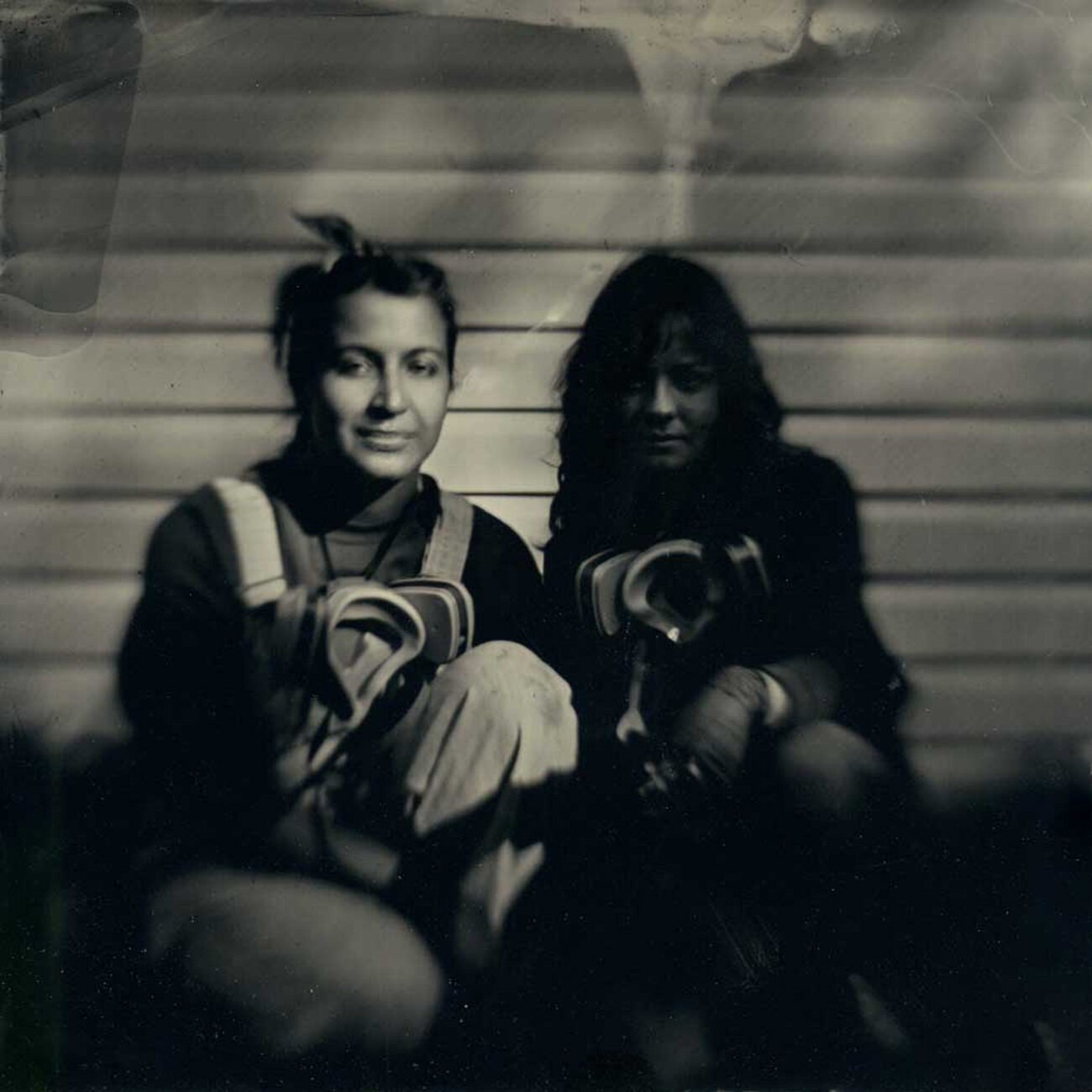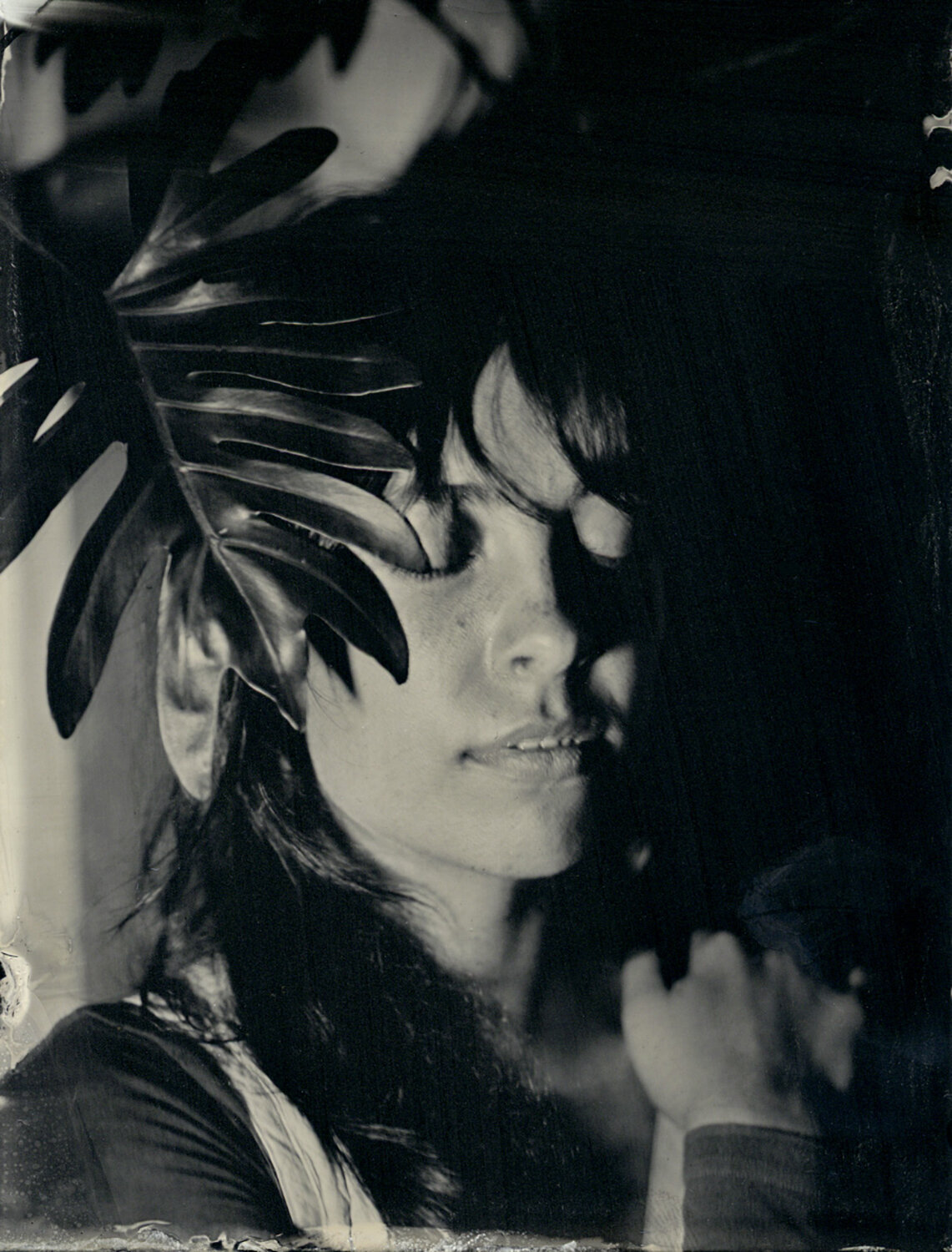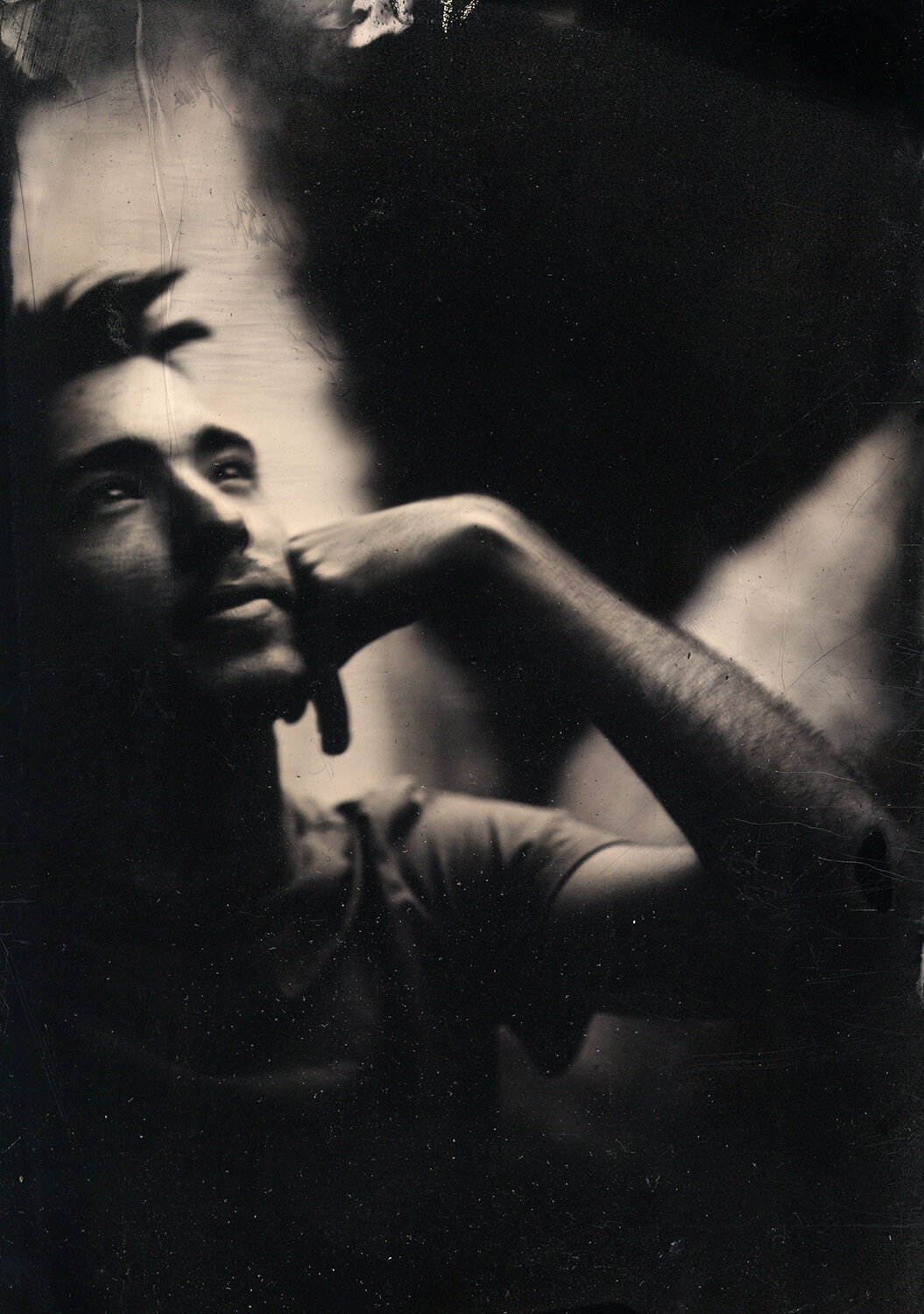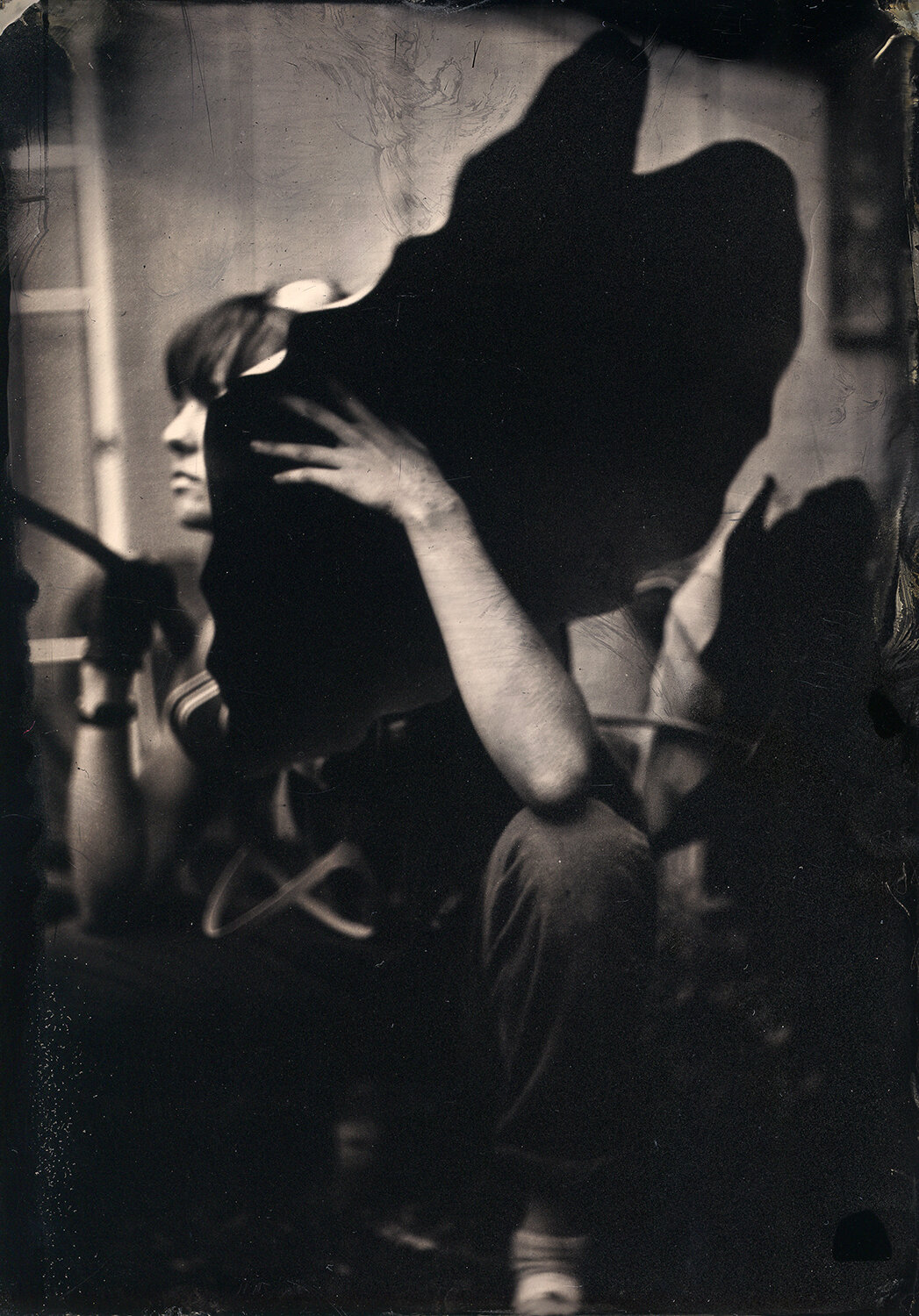Winter Garden Photographs
All these images were made as part of a collaborative project, Winter Garden Photographs, undertaken by Christina Santner & Grace Anne Odom. United by a shared passion for photographs as objects, Christina & Grace Anne collaborated to convert their bathroom into a full-scale wet plate collodion darkroom, so that they could start producing images using this historic process. First introduced in 1851, the wet plate collodion process requires that the plate, either glass or metal, be sensitized to light, exposed in the camera, developed, fixed, and then rinsed for every image made. Essentially, the wet plate photographer makes her own film, shoots, and then processes it on the spot.




Each photograph stands alone as an individual memorial, a permanent record of a completely unique and unrepeatable moment. Embedded within the final product is a record of not just what the scene looked like, but also a record of the light, temperature, physical movements & actions of the photographer on that day. It is a process that subverts the expectations of modern photography - the expectations that photographs are accessible, easy, and infinitely available. Instead, wet plate collodion photos require a major investment of time, forcing the photographer to slow down, examine, and make serious considerations about what they want to photograph. Often Grace Anne & Christina are drawn to the elements in their environment that are fleeting and temporary. The permanence of the process ultimately calls attention to our own impermanence. Every wet plate photograph is an articulation of history, as it inserts the present into the space of the past. This transformation offers an opportunity to not only reflect on these images within the context of those who came before, but also to actively take part in the creation of history; an opportunity to chose and shape for ourselves what it is we want to preserve and remember.






Together, Grace Anne and Christina tackle mixing and maintaining the complicated chemistry, designing their darkroom, and constructing photographs. They use a variety of cameras including an antique 5”x7” large format camera, modified brownie & polaroid cameras, as well as a handmade wooden box camera (built at Penland School of Crafts and designed by Lou Krueger). The wooden box camera has a plastic lens and no focusing mechanism, and to produce clear and crisp images the photographer must estimate the exact focusing distance and place the subject precisely that distance away from the camera at the dead center of the focus point.
The process to make each photograph is incredibly involved and Grace Anne & Christina share credit for every image, as they work through every step of the process together. Collaboration is essential to how they create, and results in photographs that are unique representations of their partnership, friendship, and shared time together.